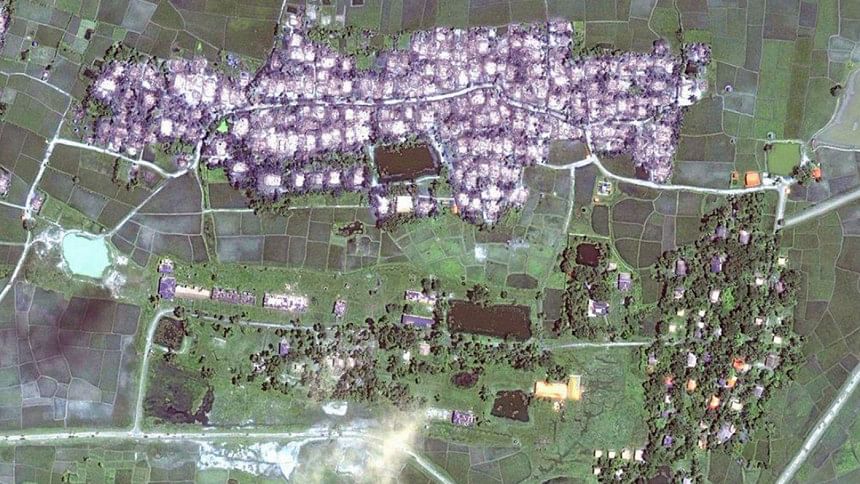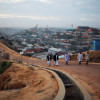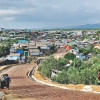‘New satellite images confirm mass destruction in Myanmar’

At least 288 villages were partially or totally destroyed by fire in northern Rakhine State of Myanmar since August 25, 2017, according to new satellite images released by Human Rights Watch.
Read More: New satellite imagery shows 214 villages of Rohingyas almost totally destroyed in Rakhine
The destruction encompassed tens of thousands of structures, primarily homes inhabited by ethnic Rohingya Muslims, the rights body said in a press release issued today.
Analysis of the satellite imagery indicates both that the burnings focused on Rohingya villages and took place after Myanmar officials claimed security force "clearance operations" had ceased, Human Rights Watch said.
"These latest satellite images show why over half a million Rohingya fled to Bangladesh in just four weeks," Human Rights Watch reports quoting its Deputy Asia Director Phil Robertson.
"The Burmese military destroyed hundreds of Rohingya villages while committing killings, rapes, and other crimes against humanity that forced Rohingya to flee for their lives," Robertson adds.
The imagery pinpoints multiple areas where destroyed Rohingya villages sat adjacent to intact ethnic Rakhine villages. It also shows that at least 66 villages were burned after September 5, when security force operations supposedly ended, according to a September 18 speech by State Counselor Aung San Suu Kyi.
The Myanmar military responded to attacks on August 25 by the Arakan Rohingya Salvation Army (ARSA) with a campaign of ethnic cleansing, prompting more than 530,000 Rohingya to flee across the border to Bangladesh, according to the United Nations refugee agency.
A total of 866 villages in Maungdaw, Rathedaung, and Buthidaung townships in Rakhine State were monitored and analyzed by Human Rights Watch. The most damage occurred in Maungdaw Township, accounting for approximately 90 percent of the areas where destruction happened from August 25 to September 25. Approximately 62 percent of all villages in the township were either partially or completely destroyed, and southern areas of the township were particularly hard hit, with approximately 90 percent of the villages devastated. In many places, satellite imagery showed multiple areas on fire, burning simultaneously over wide areas for extended periods.
Human Rights Watch found that the damage patterns are consistent with fire. Comparing recent imagery with those taken prior to the date of the attacks, analysis showed that most of the damaged villages were 90 to 100 percent destroyed.
Many villages which had both Rohingya and Rakhine residing in segregated communities, such as Inn Din and Ywet Hnyo Taung, suffered heavy arson damage from arson attacks, with known Rohingya areas burned to the ground while known Rakhine areas were left intact.

 For all latest news, follow The Daily Star's Google News channel.
For all latest news, follow The Daily Star's Google News channel. 








Comments